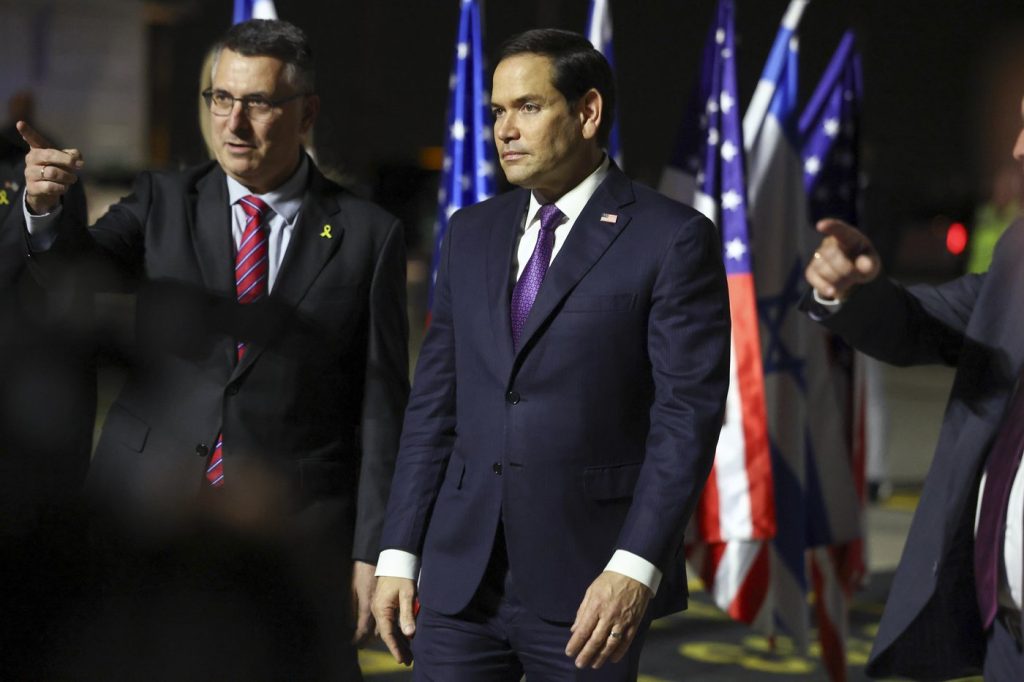JERUSALEM (AP) — Secretary of State Marco Rubio commenced a Mideast tour in Israel on February 15, 2025, amid widespread discontent among Arab leaders following President Donald Trump’s controversial proposal to relocate the Palestinian population of the Gaza Strip to other nations while developing the territory under U.S. ownership. This visit marks Rubio’s first as the top U.S. diplomat, where he is expected to receive a warm reception from Israeli Prime Minister Benjamin Netanyahu, who has publicly praised the plan, while facing resistance from Arab leaders, who have universally rejected it and are scrambling to formulate a counterproposal.
The fragile ceasefire between Israel and Hamas remains intact despite recent tensions. However, both parties face an impending deadline in early March to agree on the next phase of negotiations, or risk resuming hostilities. On the same day as Rubio's visit, the Israeli military conducted an airstrike in southern Gaza that reportedly killed three Hamas policemen while they were securing aid truck entries near the Rafah border with Egypt.
Netanyahu has suggested a willingness to reignite the conflict if no suitable agreement is reached, hinting at the possibility of leaving hostages in captivity. He has offered terms for Hamas to surrender and allow its leaders to go into exile, which the group has emphatically rejected. Moreover, there are concerns regarding Israel's compliance with the ceasefire agreement, particularly concerning the entrance of mobile homes and heavy machinery into Gaza, with Hamas previously threatening to delay hostage releases over these issues.
On a different note, Israel's Defense Ministry reported the receipt of a shipment of 2,000-pound MK-84 munitions from the United States, reversing a previous pause over civilian casualties in Gaza. In a recent radio interview, Rubio indicated that Trump’s plan is partially a strategy to pressure Arab states into proposing their own acceptable alternatives for Gaza's governance, emphasizing that the military option needs to be addressed by regional actors rather than American forces.
Arab leaders face a significant dilemma, as either facilitating the large-scale removal of Palestinians or engaging in combat against Hamas could lead to severe domestic backlash and further destabilization. In response, Egypt has announced plans to host an Arab summit on February 27 to coordinate a counterproposal that would enable Gaza’s reconstruction without forcibly displacing its inhabitants, a move that could be seen as violating international law.
Furthermore, Egypt has raised concerns that an influx of Palestinian refugees could threaten its longstanding peace treaty with Israel, a crucial aspect of U.S. diplomatic influence within the region. The ongoing negotiations for a viable post-war governance structure in Gaza face challenges due to Israel's rejection of any role for the Palestinian Authority in the territory, which Hamas has governed since 2007. Last year, a proposal by Egypt to form a governing body of technocrats under the Palestinian Authority was met with rejection from Fatah, further complicating efforts for resolution.
Rubio's itinerary includes discussions with Netanyahu followed by meetings in the United Arab Emirates and Saudi Arabia, both of which have firmly opposed any mass displacement of Palestinians. These nations hold significant weight for any potential regional response to the situation. Rubio is not scheduled to visit Egypt or Jordan, despite their historical peace with Israel and long-standing relations with the U.S., both nations have similarly rejected the reception of Palestinian refugees. Notably, Trump has threatened to reduce U.S. aid to these allies if they do not comply with U.S. expectations.
Despite Trump’s previous claims of securing the ceasefire, he has recently called for Israel to consider military action again if hostages taken during Hamas’s October 7 attack are not released promptly. This backdrop highlights the delicate nature of the upcoming discussions in the region.










